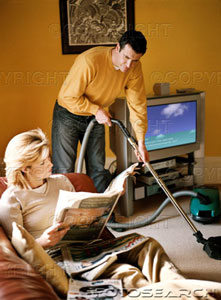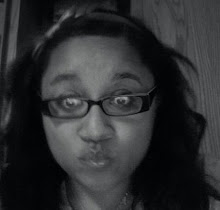4.24.2009
OUTLAW
4.22.2009
A Question of Class

4.20.2009
The Body Politic
4.17.2009
"Who Am I If I Am Not My Father's Daughter?"
4.16.2009
"Once an Enemy, Always an Enemy"
4.15.2009
He Works, She Works, but What Different Impressions They Make
4.14.2009
Chapter 3 From WL
4.10.2009
Radical Heterosexuality

4.02.2009
abstract
10887589
Women’s Studies 200: Gender and Power
Margo Tamez
In the traditional construction of American society, males must be hegemonically masculine and females must be hegemonically feminine. In our culture and many cultures around the world, a person’s biological sex and the gender you see fit for yourself are synonymous, when it often does not turn out that way. People battle with the constricting traditional views on gender seeking to create their own take on it. For my final project, I want to research differing gender roles among not only American culture, but Asian, African, and European cultures. Both males and females within these societies go beyond the basic boundaries to create different gender identities. Throughout the past semester, many of the readings dealt directly with the issue of gender identity, and the issue was present in every blog at one point. Gender is created differently for every person, especially within the college community, where students have their minds opened to ways of being they may not have felt comfortable with prior to their arrival. Interviews will be essential to my project, providing direct experiences and ideas from a younger and more unique point of view.
3.30.2009
Faciliation for March 30, 2009
Ashley Smith
Facilitation: Feminisms Black OriginsAnn. "Feminism’s Black Origins (from Ann)."
The Primary Contradiction. 2006. 30 Mar. 2009.
Key Words: Black, women, white, womanhood, race, gender, issues, history, masters, sexual, equality, slavery, spirit, revolutionary, active, America, feminist, socialism, lesbian, group, political, oppression, fought
Key Phrases: difficulties in gender; insensitive to the problems that black women face; ALL women are due as fellow human beings; dominant thinking; pursue the right to vote; black women’ white women; Jim Crow laws; National Black Feminist Organization
Key-ideas:
- The article gives a brief overview of the major movements in both the Civil Rights Movement, and in the feminist movement that were undertaken by black women
- The article provides many exceptional examples of how black women have contributed to liberation of both women and black people alike
- The article makes it clear that the author believes that for too long white women have been seen as the founders of the feminist movement, and women of color have been left behind
- The article comes from the point of view of a black woman, and gives insight into how complex the black (and other Women of Color) feminist movement is
- The author, Ann, breaks down the black feminist timeline into waves.
Quotes:
“Given the discursive power of race, black feminists have not had the privilege of abandoning the construction of a singular identity, though they recognize the plural identities of their own existence.”
“As much as they would like to think they are the owners of it, white women are not the ORIGINAL feminists. WOC are.”
This quote works as the thesis of the author’s argument. While I do not agree completely with the statement, it is quite the powerful one to make. I think that you cannot pick one race, one person, or even one time when feminism began. The author’s claim is a little bit too black and white; it lacks the comparison needed to see when the first feminist thought was made. I believe that it is impossible to decipher when the first feminist thought or act was taken; you cannot put a time and place on a progressive thought. While I do agree that women of color have been left out of the traditional ideas of feminism for being placed first as activists within their race, not their gender; I also believe that the fight for justice and equality for all is not something that can be time stamped.
Questions:
1. Do believe that it is possible to pick one binary, women of color or white women, as the original feminists?
2. Have women of color been left out of the records for the feminist movement because of their race, or did they have an equal chance?
3.27.2009
Militarism

3.24.2009
Mid-Term with Pictures

1. Food shortage and spreading cholera epidemic further destabilizes Zimbabwe
http://www.thetakeaway.org/
In this image, there is a long line of women and children waiting in line to get a chance at getting clean drinking water in the Zimbabwean capital, Harare,. The image gives a look into the troubles that Zimbabwe is infested with, one of them being a lack of clean water for all inhabitants. The image provides a backdrop for the cholera epidemic that hit the country last August and still ravages today, leaving 3,688 dead (http://www.cbc.ca/health/
2. Hitman: Blood Money
In an ad that ran in April 2006 for a PC gaming magazine, sexualized violence is the obvious theme. From the provocative way that the woman is laying, to the bullet wound in her skull to the shoes on her feet, the ad screams sex. She’s in a sexual position that is often construed as “take me now”, giving the viewer a mixed image of what the video game is really about. The woman is meant to be taken over by the men who play this murdering game, and she is used as a ploy to get young males to buy this video game. She is a part of the Dream World, where women are for the taking, mere objects to be used and abused. The header for the ad reads “Beautifully Executed”, making the themes of sex and murder, in this ad, almost synonymous.
3. Well, at Least He Drives a Prius
http://www.autobloggreen.com/
When looking at this ad, it struck me as an ad essentially promoting violence. It shows a man dragging (presumably) a dead body into a lake, with the caption “Well, at least he drives a Prius”. The ad feeds into how society accepts violence, especially when it comes from men. It excuses it because the man drives an environmentally friendly car. This ad was a part of a string of controversial ads that Toyota ran for its Prius car, the other two with more sexual connotations. The ads in general were poor acts on the Toyota Company’s part. I chose this one out of the three because of the blatant violence that was present. At first, I found it mildly amusing, and then I started to think of how the company was making it apparent that they were okay with malicious violence such as murder.
4. No Easter Egg Hunt This Year
http://www.prometheus6.org/
This picture was sent in an email by a Californian mayor to friends that caused a monstrous controversy that lead to him resigning. The picture shows the White house lawn filled with watermelons. The image is blatantly racist and aimed at President Obama. It is stereotyping African Americans, with the age old “black people love watermelon”. I first saw this picture while watching a late night talk show, and was instantly offended. It attacks the president based on his race, and demeans his place in power. With Obama elected, people screamed of the changes that would occur and that finally racially inequality was gone; but insensitive images like this only prove that racial inequality is still a problem in US society. Merely electing a black president is not going to instantly get rid of social inequality when ignorance such as this still plagues people who are in government positions.
3.04.2009
Defining Power and Gender
Gender is not merely the sex of a person, what body parts they have or do not have. Gender is the social construct that all of us grow up with. We are told to behave like a lady, or be a man. Gendering starts when we wake up in the morning and plays out all day long. Most men and women play into the roles, or boxes, of what gender they are supposed to fall into; but some consciously fight against these roles, creating the term gender bending for those who bend the traditional roles of what gender is supposed to be. Gender is defined, socially, by the clothes we wear, the makeup we choose put on (or choose not to), the way we hold ourselves and the way we are seen by others.
Power has many different levels. There are different types, and different ways that power is executed. There can be physical power, the power of words and even power of emotions. Power can be seen as muscles, or large stature, but it is also the ability to convince people to believe what you want them to, or has the capacity to get someone to do something that you want them to. Power is often unequal in almost every relationship, whether it is between friends, an intimate relationship, or in a family.
3.03.2009
GROUP NUMBER TWO!!! read me :)
Wednesday
- 1 Presenter
- Groups: Writers/Scribes
- Observers (A): Write, compose and organized narrative of your detail
- Observers (B):Write, compose and organized narrative of your detail
Appoint 1+ Observers
A.: Who Will Analyze:
- Challenges in defining power and gender
- Resistance among members of group
- Agreement making in group
B.:Who's Job it is to:
- Note the gaps: Who speaks? Who Listens?
- Who Organizes: The flow of conversation, the flow of knowledge
- What are the constraints on producing a "coherent" narrative of gender and power
- What are people's expectations in the group?
2.27.2009
Patriarchal Terrorism

2.20.2009
Lyrics versus Images-Dreamworlds 2

2.06.2009
Women and Domestic Violence

1.31.2009
Roxanne Roxanne
1.30.2009
A Black Feminist Statement
Something else that she talked about was a stranger, more subtle form of sexism. She does not want to be seen as a queen or put on a pedestal. "To be recognized as human, levelly human, is enough" (39). When I first read the quote, I laughed a little. Not in a mocking sense, but in agreement. Instead of being taught that women are lesser beings then men, some younger men are taught to put their girlfriends, and the girls they are courting on a pedestal.. To treat her like a princess, buy her pretty things, take her pretty places, open the door for her, stand up for her. Why can't I do these things myself? I'm not gonna lie, it's nice when someone opens the door for me, but is it a symbol for women being weak? Am I not able to buy myself that purse I'm looking at, or to be the one who asks you out, or when some jerk cuts me off, is unladylike for me to flip them the finger; does this make me scary? More manly? Am I too aggressive?




